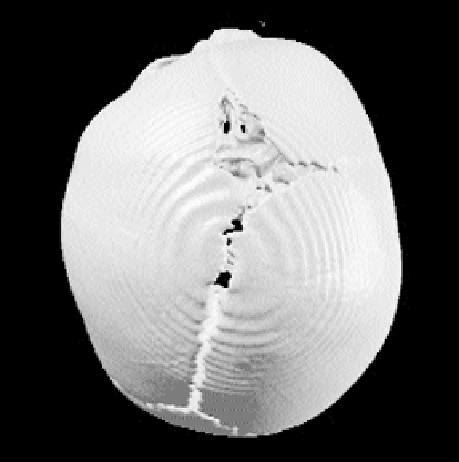Biology Reference
In-Depth Information
to “left” or “right”).
The landmarks describing cranial form include three pairs of bilat-
eral landmarks and four midline landmarks. The midline landmarks
are found on the face (nasion — NAS) and the basicranium (sella —
SEL; basion — BAS; opisthion — OPI). The bilateral landmarks are
found on the lateral rim of the orbit (frontozygomatic junction — FZJ)
and on the most lateral aspect of the basicranium (external auditory
meatus — EAM; asterion — AST). In the descriptions that follow, the
landmark names will be prefixed with either “f ”, denoting the side that
is prematurely fused, or “u”, denoting
un
fused. To compute the asym-
metry vector
A
, the fused-side measurements will be divided
(elementwise) by the unfused-side measurements:
A = F / U
. Elements
of
A
that are greater than 1 indicate measurements that tend to be
larger on the fused side. In contrast, elements of
A
that are less than 1
indicate measurements that are smaller on the fused side.
marginal confidence intervals that were computed using 100 nonpara-
metric bootstrap resamples. Nearly all of the ratios are less than 1,
indicating that the fused side of the cranium tends to be smaller than
the unfused side (
Figure 7.3
)
. Many of these ratios have confidence
intervals that exclude 1, indicating that the differences between sides
are significant. This finding makes sense, because we expect premature
Figure 7.2
Three-dimen-
sional CT reconstruction
of a child with premature
closure of the coronal
suture (superior view, with
anterior toward the top).
The fused coronal suture
is on the left side, where
the frontal bone appears
flattened.


Search WWH ::

Custom Search